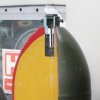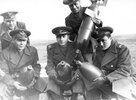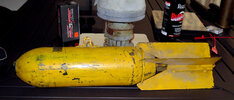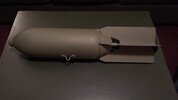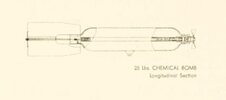The Romanian air Force in ww2 used a wide variety of bombs (must have been a serious headache for their ordnance personnel) as there was a long standing policy of buying bombs together with planes - so French bombs with French planes, Italian bombs with Italian planes and so on...Thye also bought from the German "booty bombs" - Polish and apparently Greek. Later they went on to produce their own bombs models
This is the non-exhaustive list (but quite extensive) of bombs present in the Romanian inventory in 1941 (numbers besides the type of the bomb indicate the number available at the beginning of the 1941 offensive).
French
50kg 345
100 kg 225
200 kg 298
500 kg 5
Romanian
12 kg 15
50 kg 205
100 kg ?
225 kg 383
American type (Greek ?)
50kg (100 lb?) 5
225 kg (500 lb) 42
German
SC50 892
SC250 125
PuW 12 kg 347
PuW 50 kg 276
PuW 100 kg 286
PuW 300 kg 68
British
4 lb (?) 8
20 lb 16
25 lb incendiary 14
40 lb 16
250 lb 54
500 lb 42
Polish
12 kg
50 kg PuW
50 kg MZT-32
50kg wz.39
50kg T-32
100 kg Z-31 (The Ż-31 actual weight is 110.86 kg but is generally classified as 100 Kg )
Michelin Flares
light "mouse-bomb" incendiary T-34
Italian
50 kg 10
Unknown
9kg Incendiary 12 (PuW?)
1kg Incendiary 64 (French? German?)
There were not Czech made bombs in use
So called WWI Michelin aerial bomb exhibited in the National Museum of Romanian Aviation in Bucharest - a WW1 era PuW or a Polish PuW Interwar clone

PuW

Romanian produced 12kg bombs

French 50kg (or Polish ?) Tail fin

Officially labelled as an aircraft bomb (could be a mortar round but similar mortar rounds were known to have been used as aerial bombs by the French, Italian, British, Russian and Spanish Republicans, so why not the Romanian)

"American" (Greek ?) 225kg and "50"kg (100lbs) bombs



Unidentified "300kg bombs" (from the Romanian manual of the SM79JR the Romanian version of the Italian SM79B - these are definitively not Italian bombs, may be an artistic retouch of PuW)

Romanian Produced bombs 50kg/100kg/225kg



Could someone share more information of these last, Romanian produced bombs (dimensions, weights, drawings) ?
This is the non-exhaustive list (but quite extensive) of bombs present in the Romanian inventory in 1941 (numbers besides the type of the bomb indicate the number available at the beginning of the 1941 offensive).
French
50kg 345
100 kg 225
200 kg 298
500 kg 5
Romanian
12 kg 15
50 kg 205
100 kg ?
225 kg 383
American type (Greek ?)
50kg (100 lb?) 5
225 kg (500 lb) 42
German
SC50 892
SC250 125
PuW 12 kg 347
PuW 50 kg 276
PuW 100 kg 286
PuW 300 kg 68
British
4 lb (?) 8
20 lb 16
25 lb incendiary 14
40 lb 16
250 lb 54
500 lb 42
Polish
12 kg
50 kg PuW
50 kg MZT-32
50kg wz.39
50kg T-32
100 kg Z-31 (The Ż-31 actual weight is 110.86 kg but is generally classified as 100 Kg )
Michelin Flares
light "mouse-bomb" incendiary T-34
Italian
50 kg 10
Unknown
9kg Incendiary 12 (PuW?)
1kg Incendiary 64 (French? German?)
There were not Czech made bombs in use
So called WWI Michelin aerial bomb exhibited in the National Museum of Romanian Aviation in Bucharest - a WW1 era PuW or a Polish PuW Interwar clone

PuW
Romanian produced 12kg bombs
French 50kg (or Polish ?) Tail fin

Officially labelled as an aircraft bomb (could be a mortar round but similar mortar rounds were known to have been used as aerial bombs by the French, Italian, British, Russian and Spanish Republicans, so why not the Romanian)
"American" (Greek ?) 225kg and "50"kg (100lbs) bombs



Unidentified "300kg bombs" (from the Romanian manual of the SM79JR the Romanian version of the Italian SM79B - these are definitively not Italian bombs, may be an artistic retouch of PuW)

Romanian Produced bombs 50kg/100kg/225kg



Could someone share more information of these last, Romanian produced bombs (dimensions, weights, drawings) ?
Last edited:

















